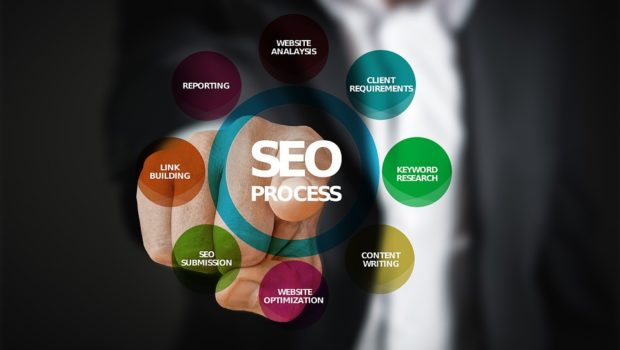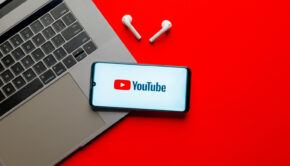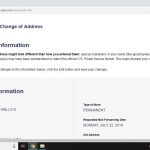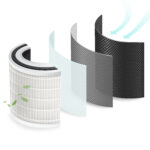What Should You Do in SEO When Things Goes Wrong
SEO! A great tool to rank your business in the search engines. It has pros and cons. Today, we will discuss the unfortunate things that go wrong in SEO. The primary reasons behind the failure can be that you:
- Get over-aggressive with SEO tactics.
- Perform wrong things that are considered wrong by Google.
- Using spammy tactics.
If you are facing this problem, then relax we are here to help. In this blog, we will be sharing the things that need to be done when things fall flat in SEO optimization of your website. Read ahead to know about the problems and the things to be done for solutions:
1. Identifying Your Problem
Whenever we face a problem, you first need to diagnose the root cause of a problem. To learn about the problem, the two indicators can be:
- You may learn about the problem if you see a large drop in the organic search traffic to your site.
- Secondly, you may get a message from Google Search Console if something is wrong going on your site.
2. Review of Manual Penalties
If you get a notification about a problem within Search Console, then this is considered a manual penalty. This means Google analyzed your site and assessed a penalty. As a result, you receive a message in Search Console. It normally gives you a detailed description of the problem.
The three most common manual penalties are:
- Sitewide link penalties.
- Partial link penalties.
- Thin content penalties.
Solution: In a manual penalty, follow this basic three-step process:
- Determine the cause. For instance, if you are having a link penalty, you need to determine which links were not liked by Google.)
- A remedy for the problems.
- Submit a Reconsideration Request to Google, requesting them to remove the penalty.
3. Outlining Algorithm Penalties
This penalty is caused by algorithms that Google uses to highlight the sites that are poor in quality and then lower your rankings.
Some well-known algorithms are:
- Panda is now part of the main Google algorithm. It focuses on the identification of poor-quality content.
- Penguin is now part of the main Google algorithm. It targets poor quality links.
- Search Quality: It is a lesser known algorithm. It evaluates the site/page quality.
- Top Heavy Ads: This focuses on the sites that use too much advertising.
- Payday Loans (Spammy Sites): It identifies spammy SEO practices.
If are having one of these algorithms and it is hurting your traffic, then you need to try to figure out the reason behind it as Google will not notify you about this with a message in Search Console. Initially, Google used to announce updates of algorithms like Panda and Penguin, but not happens now. You need to work regarding this on your own. For this, you need to have the strong understanding of algorithm to identify the problem. Finding difficult to analyze the problem, get services from professional SEO company to get the work done.
4. Avoid Links Google Doesn’t Like
If you have received a manual link penalty, then this is the indication that your links are not up to the mark as per the Google standards. Google wants links that are editorial in nature, that act as a vote for your content, instead of being paid or provided compensation.
Some common links that cause problems are paid links, web directories, article directories, international countries (from countries where you don’t have your business), coupon codes, poor quality widgets, affiliate spam, comment spam, link exchanges, bad anchor text mix, and other non-editorial links.
Solutions for Link Related Problems: Following are the nine basic steps to clean up your link profile:
1- Build a complete list of links for your site. Google Search Console do provide a list but that’s incomplete. Obtain data on links from Moz Link Explorer, Majestic, and Ahrefs along with Google Search Console.
2- Eliminate the duplicate copies of the links repeated in the different tools.
3- Analyze the links. Generally, you don’t need to look at more than two or three links per domain linking to you.
4- Mark links that are problematic and address them.
5- Repeat the step three and forth to analyze and mark the links from each of the domains linking to you.
6- Find the site from where you want to remove the link and request their removal.
7- Contact those again who don’t respond to your request. Don’t make this request more than three times.
8- Use Google’s disavow tool to remove the link you are not able to remove and to tell Google not to credit them to your site.
9- You can recover from this problem by attracting high-value links for your website.
Penguin Recovery Process: Penguin generally lower rankings of sites who are using poor link building practices. Penguin 4.0 release on September 23, 2016, it simply discounts links that it doesn’t like. The other thing that happened with the Penguin 4.0 release is, it got rolled into the main part of the Google algorithm, so Penguin updates are no longer announced. As a result, there is also one scenario in which a Penguin action may seem like it’s a penalty. If you’re busily obtaining links that the worthy according to Penguin algorithm it will help you to improve your rankings and organic traffic.
It is recommended to earn editorial links in your link building strategy. If Penguin considers your link unworthy links, there is no benefit in filing a reconsideration request. Just focus on earning 100 percent editorial links. Worried about the acquisition of quality links for your website? Relax and get in touch with professional experts of Cape Cod SEO agency to get the desired results and editorial links to avoid the penalty.
5. Avoid Content Google Don’t Like
Some important types of content that are not liked by Google are thin content, curated content, syndicated content, scraped content, doorway pages, user content that’s is not properly moderated, advertising dominated content, and e-commerce site having pages with the only manufacturer’s supplied description.
Fixing Content Problem: First of all, understand what quality content is:
- Unique articles that offer a solution to the problem of a user.
- Reviews of products. Keep one thing in mind reviews that you copy from other sites don’t count as unique content.
- How-to videos that guide user step-by-step to learn the things. Creating helpful video and going for video SEO is helpful to make your ranking better in search engines.
- Interactive content
- Data-driven studies revealing information not shared by others.
- Expert advice or interaction with experts.
You need to improve the quality of the content. Google prefers quality, so you need to invest your time and energy in producing quality and interactive content.
Panda Recovery Process: As mentioned earlier PANDA analyzes the content quality and it is part of Google Algorithm.
It can take actions that lower overall site rankings when it detects content quality problems on your site. Secondly, a reconsideration request is not useful here. You need to fix your content and then wait to see. Google may take months Google to re-crawl your site, see the improvements, and then rerun the Panda portion of their algorithm on it. The best practice is that you should be very focused on your content so that this penalty doesn’t come to your side and stay away from the worries of Panda.
6. Reconsideration Request
After getting a penalty, fix the problem and after that file a reconsideration request. Google will not notice your fixes, so you need to notify them. Some key elements to a reconsideration are listed below:
- Fix your problems
- Make your reconsideration request precise and to the point.
- Don’t complain about the penalty.
Other types of Penalties
A brief list of some other types of penalty are:
Cloaking or Sneaky Redirects
Hidden Text or Keyword Stuffing
User-Generated Spam
Unnatural Links from Your Site
Hacked Site
Pure Spam
Spammy Free hosts
These were some of the penalties with their solution. You need to act according to the problem you are facing after the proper identification. If you are not able to analyze the problems properly, then you may get help from the experienced SEO experts. The experts will identify the root cause and will fix to increase the traffic and ranking of your website in search engines.















